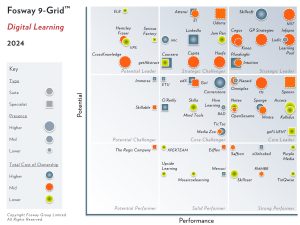The ‘endowment effect’ is the well-known theory in behavioural economics that a sense of ownership makes a big difference in how we think and act. On a transactional level, it means that people will pay more to retain something they already own than to obtain something similar which is owned by someone else even when there is no real cause for attachment. Put simply, a coffee cup becomes more valuable when it is my coffee cup.
Experiments demonstrate that such an endowment, or sense of ownership, can be established in just a few moments. Once it is, people cling on – and for economists, that is expressed in monetary value. So for those of us in the business of changing behaviour, how can we express the endowment effect in terms of performance, rather than pennies?
Firstly, on a large scale the endowment effect translates into long term emotional investment. This stuff is the glue which binds large communities together in the pursuit of common goals. It’s almost self-evident that once we have a certain store of feelings about a person or a group of people, it’s hard to let go.
And when an organisation can achieve the emotional investment of its employees – and it isn’t easy – they start acting funny. The sense of attachment means that, when faced with an unwelcome change or difficulty, they embrace it – they even become emotionally attached to the unwelcome change. Why? They’d rather keep a hold of the existing emotional stockpile than go out to hunt for a new one.
An example of this is Arthur Andersen’s employees. The conduct of just a few people in the Enron scandal brought the company down, but its demise didn’t divest its thousands of employees from their sense of ownership and emotional bond with the organisation. Ten years on, the Andersen alumni community is alive and well (in Canada, for example, they established the Arthur Anderson Legacy Scholarship Fund to help vulnerable young people get into university). What is holding this community together? It’s certainly not a monthly pay cheque.
Or how about when fans club together to buy back a favourite club that has gone into administration (such as Portsmouth FC earlier this year)? What this proves is that the endowment effect makes us incredibly resilient to change.
The effect is clearly a hugely powerful tool. And it has big, if unexplored, implications for people development and talent practice. It demonstrates that a sense of ownership is at the heart of the engagement problem. When we say that learners are ‘hard-to-engage’, what we really mean is that we don’t know how to get learners to take ownership of new behaviours and learning outcomes.
‘Engagement’, then, is not about buckets of branding, messages from the MD and a snazzy design (although those can all help). It’s about the emotional nuts and bolts of the trainee/trainer relationship. And currently, the transaction taking place is the wrong way around.
The typical model is as follows: L&D produces training content, and the learner consumes that content. L&D is the marketplace and the learner is the customer. This is okay when your training product is an envied five day leadership course in the Swiss Alps that only the lucky few get to go on every year. But when you want to do something serious, like get thousands of people to become more mentally resilient to change, stress and disruption, the product is less appealing.
Instead, we need to reverse the order of the transaction. The learner should be the producer, and L&D should be the consumer.
Within the context of a single learning intervention, it means starting from what the learner already has and finishing with it too. They produce, we ‘purchase’. This is why attitudinal diagnostics are so effective: by asking the learner to volunteer opinions and using those opinions to form the learning outcomes, we change the order. Suddenly, those outcomes become the property not of L&D, but of the learner.
The result? Real engagement and a real motivation for campaigning change. In the case of mental resilience, this means that learners will actively seek to make the changes that only they are capable of making.
There are other techniques, but that’s for another post. Soon I’ll also be looking at what flipping the L&D / learner relationship means for learning platforms, and why the self-organised learning environment is the ultimate way of exploiting the endowment effect…
By the way, we’ll be exploring how emotional investment and the endowment effect achieved such impressive results in a mental resilience course developed with Transport for London in an LSG webinar on 19 September. I hope to see you there.





